Ed. note: As we continue our installments of Tom C Rogers’ landmark study of late-20th-century OC political corruption, “Agents’ Orange,” we find ourselves still transcribing the mammoth, 100-page first chapter, “The Role of Volunteers!” Yes, Tom really loved the idea of political volunteers, and this installment is “NON-PARTISAN VOLUNTEERS.” If that sounds boring, you’ll still want to skim this, and read about the roots of everyone from Los Amigos and Anaheim HOME to the OC Business Council and OC TAX, still shaping policy and shaking things up!
(As Tom was writing in the year 2000, the countywide battles over a proposed El Toro International Airport to take the place of John Wayne were still in full swing, and that’s reflected here…)

Nonpartisan Volunteer Organizations, OC 1960-2000
Airport Working Group
 The Airport Working Group was formed in response to Orange County’s plan to expand what is now known as John Wayne Airport. Its membership consisted of citizens who lived within the noise impact areas that would be enlarged by any increase in permissibile flight.
The Airport Working Group was formed in response to Orange County’s plan to expand what is now known as John Wayne Airport. Its membership consisted of citizens who lived within the noise impact areas that would be enlarged by any increase in permissibile flight.
The original group was made up primarily of residents of Newport Beach and of some unincorporated areas located under the flight paths. The most prominent of the founders were Barbara Lichman and Clarence “Buzz” Turner. Turner was later elected to the Newport Beach City Council and served as mayor (1991-2.)
The Airport Working Group was instrumental in limiting commercial flights to certain hours, and in imposing strict noise abatement procedures on departing passenger jets at John Wayne.
In recent years its activities have been directed toward promoting a larger commercial aviation facitility at the El Toro Marine Air Base, and it assisted in drafting the General Plan Amendment mandating the construction of an international airport at El Toro. With an impressive infusion of cash by a Newport Beach developer, professional circulators obtained sufficient signatures to place a General Plan Amendment (GPA) on the ballot as Measure A.
Anaheim Homeowners Association (Anaheim HOME)
 In June of 1987, the Anaheim City Council approved a redevelopment project for the area adjacent to Disneyland. The project was to provide parking facilities, lighting, and other improvements for the benefit of the Disney Corporation.
In June of 1987, the Anaheim City Council approved a redevelopment project for the area adjacent to Disneyland. The project was to provide parking facilities, lighting, and other improvements for the benefit of the Disney Corporation.
On Friday July 3, the city mailed out notices to all residents affected by the proposal, informing them that their homes would be subject to condemnation by virtue of eminent domain. The mailing coincided with a long holiday weekend, and the notices were not delivered until four days later.
The mail was delivered on Tuesday; the same day as the regular City Council meeting. Over 3,800 irate citizens showed up, and the session was moved to a theater close by in order to accommodate this throng of protesters.
At the next meeting, which was held in the Anaheim High School Auditorium, Anaheim Redevelopment Planning Director Norm Priest, an attorney, made a presentation in favor of the project. However, he was subjected to hostile questions from the floor indicating that the attitude of those present was decidedly against the redevelopment project.
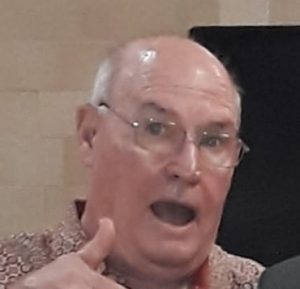
White 32 years later, now an Anaheim Planning Commissioner.
Priest asked the crowd, “What do you expect me to do, resign?” After a few moments of complete silence, Steve White stood up in the back of the hall and shouted, “Yes!” – after which the gathering jumped to its feet and reiterated White’s sentiments.
Priest resigned the following day, and the project was shelved, at least for the time being. Norm Priest moved on to the city of Ontario and later was hired as counsel for Disney World in Orlando, Florida.
Prior to this outcry, the city of Anaheim had passed a 5% admissions tax on Disneyland entrance fees, but the tax was never collected. Some believe that Priest, as an attorney, should have known of the nonpayment and brought the matter to the attention of the City Council. The question became moot after the council rescinded the tax after it had been on the books for a year.
Out of this turmoil, the citizens in the area formed the Anaheim Homeowners Association (now Anaheim HOME.) Steve White, Doug Kintz, Betty Ronconi, and Curtis Stricker served as de facto founding board members. The organization has taken a keen interest in city affairs, particularly as they relate to Disneyland, It publishes and distributes a monthly bulletin called the Anaheim Home Neighborhood News.
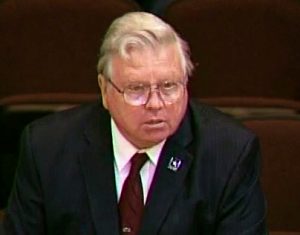
The notorious William Fitzgerald still carries the Anaheim HOME torch.
When the Disney Corporation was considering the construction of a theme park in Virginia, with the Civil War as its motif, local Virginians rose up in arms to protest the project. Citizens of Manassas County were adamantly opposed to the commercialization of such a somber period of our nation’s history. Mickey Mouse with a musket did not seem an appropriate memorial to soldiers of both sides who had fought and died in that terrible war. They were also concerned that the operation would transform their once-peaceful community into a land-locked Coney Island, replete with garish faux-battleground props.
The Virginians contacted the Anaheim Homeowners Association and gathered sufficient information to mount a strong protest, and Disney ultimately abandoned the proposal altogether.
Building Industry Association (BIA)
 The Building Industry Association is organized in the state of California, and has chapters according to counties or regions. The Orange County chapter is one of the more active franchises with a full complement of paid staff. The BIA is associated with the National Association of Homebuilders as well as other groups with similar goals.
The Building Industry Association is organized in the state of California, and has chapters according to counties or regions. The Orange County chapter is one of the more active franchises with a full complement of paid staff. The BIA is associated with the National Association of Homebuilders as well as other groups with similar goals.
The BIA is most actively involved in political and legal issues pertinent to all aspects of the construction industry. It employes lobbyists at many levels of government, and has a very successful PAC, which, in one 1997 fundrasigin event raised $144,000. These funds are used to support pro-housing candidates for public offices, and in the same year, the BIA PAC contributed to over 160 individuals seeking election in California.
 The OC chapter has been dominated by the Irvine Company and the Mission Viejo Company – with Monica Florian, Irvine Co VP, serving on the executive committee as secretary treasurer; and Dave Celestin of the Mission Viejo Co as an ex-officio member of the four-person managing group.
The OC chapter has been dominated by the Irvine Company and the Mission Viejo Company – with Monica Florian, Irvine Co VP, serving on the executive committee as secretary treasurer; and Dave Celestin of the Mission Viejo Co as an ex-officio member of the four-person managing group.
The large landowners often develop their properties with other builders, and this relationship gives them a great deal of leverage in the affairs of the OC chapter that in turn translates into influence at the state level.
The BIA has other interests including labor relations, insurance and group purchasing programs, but because of the myriad local, state, and federal regulations that apply to the construction business, a great deal of BIA’s emphasis has been placed on the legal-political aspect of its activities.
Citizens’ Charter Committee
 After the 1995 formation of the County Charter Commission (CCC), a number of activists concluded that this group appointed by the Supervisors was not going to accomplish any changes in county government, as the make-up of the commission was that of persons biased toward preserving the status quo.
After the 1995 formation of the County Charter Commission (CCC), a number of activists concluded that this group appointed by the Supervisors was not going to accomplish any changes in county government, as the make-up of the commission was that of persons biased toward preserving the status quo.
The Citizens’ Charter Committee held regular meetings and fashioned a charter document after considerable deliberation, and submitted it to the Board of Supervisors with a request that it be placed on the same ballot as the charter document developed by the CCC.
This request was turned down, but the group remained active as opponents of the Commission’s charter which, as Measure T on the ballot, went down to a resounding defeat. Citizen volunteer Patrick Quaney, one of the original founders of the Citizens’ Charter organization, was a leader in the successful campaign.
Citizens Against Unfair Taxation (CAUT)
CAUT was formed in 1987 to oppose Proposition A, a one-cent sales tax increase designed to raise over $5 billion to build certain roads and fund other transportation projects.
It was a coalition of conservative businessmen, anti-tax groups, environmentalists, retail merchants including the Motor Car Dealers, economists such as Dr. Arthur Laffer, traffic engineers, and representatives from minority groups and the economically disadvantaged.
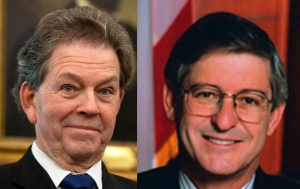
Laffer and Agran, late-80’s tax fighters!
Founders included Thomas C Rogers, former chairman of the OC Republican Central Committee (and the present author); Norm Grossman from Laguna Greenbelt; Larry Agran who would later become Mayor of Irvine; Belinda Blacketer, Laguna Beach activist; Earl Ike, president of the Motor Car Dealers Association; Bill Moses of the Tustin News, John Prescott and his son Earl, businessmen from Tustin; Russell Burkett of Orange County Tomorrow; and every Republican officeholder in Orange County WITH THE EXCEPTION OF ED ROYCE.
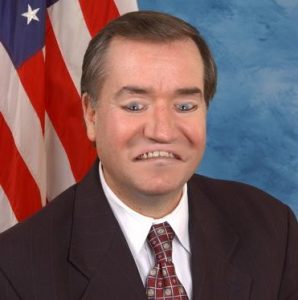
Little Ed Royce supported the tax hike!
Royce, who was a state senator at the time, threatened to sue CAUT for using his name as an opponent of Prop A in a news release. CAUT notified as many news outlets as possible that Ed Royce did not oppose this $5 billion tax increase, and averted a lawsuit.
CAUT has been active in opposing other county and state tax increases, most notably the second Measure M, state Proposition 111, and Measure R. (The campaign for Proposition A will be covered in my section “Benchmark Ballot Propositions.”)
.
Citizens for Jobs and the Economy
 George Argyros, a developer who dabbles in other projects, decided that the Marine Corps base in El Toro would make a perfect place to construct a huge international airport, even though such a facility would have a negative impact on many, if not most, residents of south county communities. His stated motivation was to provide job opportunities for county residents cashing in on the predicted economic boom that a giant airport would bring to the area.
George Argyros, a developer who dabbles in other projects, decided that the Marine Corps base in El Toro would make a perfect place to construct a huge international airport, even though such a facility would have a negative impact on many, if not most, residents of south county communities. His stated motivation was to provide job opportunities for county residents cashing in on the predicted economic boom that a giant airport would bring to the area.
Some non-believers were convinced that Argyros, who lived under the noisy flight path of the existing John Wayne Airport, was actually trying to pass the noise nuisance on to his neighbors to the south by diverting most commercial air traffic to the proposed El Toro runways.
Whatever his real motivation might have been, Argyros thought that by spending big bucks he could win if the matter went to the voters. He had enough clout with the Board of Supervisors to insure that the skids would be lubcricated sufficiently to slide the project through the regulatory process. Accordingly he formed Citizens for Jobs and the Economy, which consisted of himself, a relative (by marriage) of Walter Knott, and some cronies from the Lincoln Club (see “Committee for 21,000 Jobs,” below.)
Argyros showed little concern for the opposing side, and he began the expensive task of paying for enough signatures to qualify a pro-airport measure for the ballot.
Citizens for Responsible and Constitutional Laws
 This organization was formed in 1996 to oppose daytime curfew ordinances being considered by several cities and by Orange County itself.
This organization was formed in 1996 to oppose daytime curfew ordinances being considered by several cities and by Orange County itself.
While some of its members are engaged in home-schooling programs for their own children, they have recruited many other citizens to take an interest in repressive legislation that would affect a large majority of law-abiding citizens.
Citizens for Safe and Healthy Communities
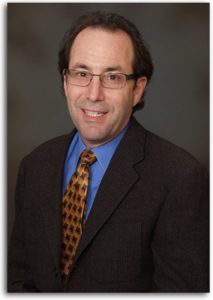 Formed in 1999, this organization was established to draft and qualify an initiative that would protect communities in Orange County from a number of potential hazards and major nuisances.
Formed in 1999, this organization was established to draft and qualify an initiative that would protect communities in Orange County from a number of potential hazards and major nuisances.
While the major thrust of this new group is to restrict the construction of an intrusive international airport in South County, it also addresses the threat of toxic waste. Jeff Metzger, a resident of Coto de Caza, was one of the original founders and served as the first chairman.
The Citizens’ group was successful in qualifying a ballot initiative; the Board of Supervisors named it Measure F and placed it on the ballot for the primary election of 2000 This initiative survived a legal challenge by pro-airport forces in 1999. [And, spoiler alert, in 2000 it won overwhelmingly!]
Citizens for Sensible Growth and Traffic Control
[a fable of attempted co-optation! – V.]
 In response to the unabated approval by the Board of Supervisors of more and more high-density development without provision for adequate infrastructue, the alumni of Proposition A gathered again. Many of the individuals who had participated in the K.O. of Prop A began meeting in 1987, and formed what was at first a loosely knit group. Their initial activities were limited to appearances at BoS public hearings on matters pertaining to development project approval.
In response to the unabated approval by the Board of Supervisors of more and more high-density development without provision for adequate infrastructue, the alumni of Proposition A gathered again. Many of the individuals who had participated in the K.O. of Prop A began meeting in 1987, and formed what was at first a loosely knit group. Their initial activities were limited to appearances at BoS public hearings on matters pertaining to development project approval.
It didn’t take long for the veterans of the Prop A battle to discover that nothing had changed, and that board members were as eager as ever to comply with any project brought before them, particularly if it was from a petitioner who had contributed to their election campaigns.
They also learned early on that any citizen’s objection to a particular project, no matter how well thought out and logically sound, was invariably rejected out of hand. Developers could always take as much time as they deemed necessary to present a case (which in most cases had obviously been pre-approved), but citizens were limited to three minutes.
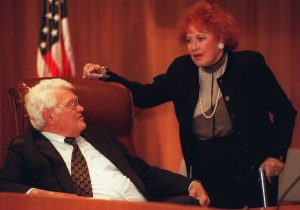
The two late Supervisors, Riley and Wieder, who were rude and corrupt assholes at this time.
Not only that, two of the Supervisors in particular – Thomas Riley of District 5 and Harriett Wieder of District 2 – were often rude and always arrogant whenever a constituent voiced a dissenting opinion. It was clear to all that had an interest in keeping the OC a decent place to live and work that the Board of Supervisors did not share their vision.
Since it was practically impossible to unseat incumbents because of the unlimited funds available to these lackeys, the citizens decided to place the brakes on these de facto “employees” of the developers whose decisions were beginning to cause a deterioration of living conditions, particularly with respect to traffic congestion.
These grassroots veterans decided to put forth a ballot initiative tying the mitigation of increased traffic to approval of major future developments. With little or no funds, they faced a daunting task.
First the initiative would have to be written; step two was to file the proper notices and gain sufficient signatures to qualify it for placement on the ballot; and step three was to campaign for its passage. A daunting task, to be sure, but there was no shortage of concerned citizens who volunteered to help. In the original group were Belinda Blacketer, Greg Hile, Norm Grossman, Larry Agran, Terry Kwan, Bill Speros, Ray Catalano, Russ Burkett, Toni Iseman, Tom C Rogers, Norm Eckenrode, Tom & Teddi Lorch, Sherry Meddick, Frank Laszlo, Ed Dornan, Jorhn & Marge Gardner, Ray Chandos, and numerous other dedicated volunteers.
While their efforts were scoffed at in the beginning, drafts of the ballot measure were written by Belinda Blacketer and Greg Hile, both attorneys.
They called their new organization Citizens for Sensible Growth and Traffic Control. Developers at first were skeptical, but as the movement gained momentum, newpaper coverage increased.
 Those who felt threatened by this grassroots effort requested an opportunity to sit in on the drafting process. They insinuated their way into the deliberations by promising that if an acceptable document was drafted, they would support it, and prevail upon the BoS to adopt it – no signature gathering or election campaigning required!
Those who felt threatened by this grassroots effort requested an opportunity to sit in on the drafting process. They insinuated their way into the deliberations by promising that if an acceptable document was drafted, they would support it, and prevail upon the BoS to adopt it – no signature gathering or election campaigning required!
A drafting committee was established with both sides represented, and held frequent meetings at the offices of J. Ray Construction Company in Irvine. Representing the developers were Tom Nielsen and Monica Florian for the Irvine Company; Tony Moiso from the Rancho Santa Margarita Company; and an executive from the Building Trades Council. The make-up of both sides varied from time to time depending on the subject matter being discussed.
The meetings were cordial but it didn’t take long to determine that, in reality, the developers had no intention of relinquishing their stranglehold on county government. Why should they? They’d had their own way for years, and stood to make billions in the future on top of their past millions.
They OWNED the Board of Supervisors and had no intention of allowing a grassroots coalition of environmentalists, anti-tax groups, and concerned citizens to stand in their way.
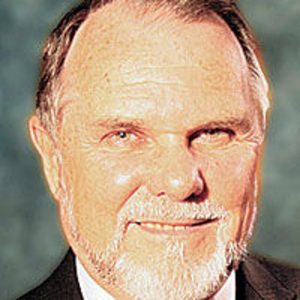
“I… AM… BALGENORTH!!!”
One incident in particular convinced the citizens that the other side was not meeting with them in good faith. At one meeting, the Building Trades Council representative, Bob Balgenorth, who had appeared to be leaning on the side of “sensible growth,” finally indicated that labor would support the initiative. That particular meeting lasted until about 5pm; later that same evening Balgenorth received a call from a top East Coast labor leader, suggesting that he recant his assurance of local labor’s support for the initiative. He did so, and later his name appeared as a signatory for the ballot argument AGAINST Measure A.
The citizens’ group felt it had gone the last mile to accommodate the concerns of the builders. It was reluctant to admit that there was little chance the developers would ever agree to anything other than a “feel-good” proclamation, but time was running out and the hard work of a full-scale ballot initiative campaign had to get under way. The meeting folded and the battle began. I will cover the campaign for Measure A in my section “Benchmark Ballot Propositions.”
[Every WORD of that story sounds familiar and classic – the Editor.]
Clean the Air / NO JETS
 Formed in 1997 by Jim Davy, this group consists for more than 100 Homeowners’ Associations opposed to an international airport at El Toro. Davy headed the signature drive for Measure F and set a record for Orange County petition circulation submitting 192,000 signatures to the Registrar in 1999.
Formed in 1997 by Jim Davy, this group consists for more than 100 Homeowners’ Associations opposed to an international airport at El Toro. Davy headed the signature drive for Measure F and set a record for Orange County petition circulation submitting 192,000 signatures to the Registrar in 1999.
Clergy for Wholesome Communities
Comprised of 80 clergy (35 from north county, 45 from the south) dedicated to a responsible non-aviation redevelopment of the surplus federal property at El Toro. Co-Chaired by Pastor John Stewart and Father Jack Hennings.
El Toro Airport Info Site
An award-winning website that was originally set up by Dan Finch and sponsored by TRP. Later Len Krasner became editor of the site, which has grown worldwide attracting the interest of anti-airport groups throughout the world.
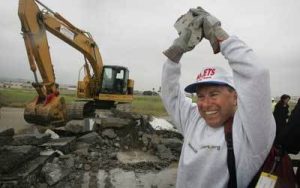
Len Krasner celebrates with a chunk of the El Toro runway being finally demolished.
The El Toro Airport Info Site gathers and communicates news and research about airports and El Toro re-use issues. It operates as a resource center.
El Toro Coalition
The Coalition was formed as an umbrella organization that coordinates the efforts of all groups proposing a non-aviation use for the El Toro Marine Corps Air Station (MCAS.) One of the founders who also served as Chairman was Len Krasner.
Committee for 21,000 New Jobs
 This was the ORIGINAL organization formed by George Argyros to front his campaign to build an international airport at El Toro. He set it up as a nonprofit group later in order to receive the least-expensive postage rates for the waves of political mailers he’d be sending out.
This was the ORIGINAL organization formed by George Argyros to front his campaign to build an international airport at El Toro. He set it up as a nonprofit group later in order to receive the least-expensive postage rates for the waves of political mailers he’d be sending out.
This was apparently the interim committee, formed in anticipation of the nonprofit status being granted to Citizens for Jobs and the Economy. Information on file with the OC registrar’s office lists Dana Reed as a principal of the Committee, and a Figueroa Street address in Los Angeles as its headquarters.
Bruce Nestande, an executive working for Argyros, was tapped to head both organizations which had, despite their titles, little or no volunteer membership in the beginning… but with deep pockets and a penchant for lawsuits, who needs ordinary citizens?
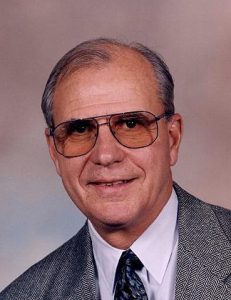 Committee of Seven Thousand (COST)
Committee of Seven Thousand (COST)
This organization was formed by Bill Speros, a resident of Irvine, to oppose the San Joaquin Hills Corridor Toll Way (the 73.) Mr. Speros was successful in gathering the signatures of 7,000 individuals who did not want an autobahn-sized highway intruding through their peaceful community.
The group took the matter to court, and pursued it up the judicial ladder, but as in co many cases the citizens were outgunned and eventually the road was built. [See my later chapter “For Whom the Road Tolls.”]
Committees of Correspondence
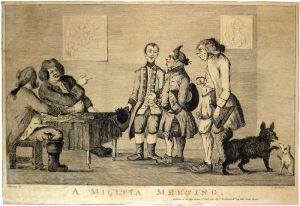 In 1993 there were a number of activist groups that had a variety of interests at both the city and county level of government. As these organizations appeared before various elected bodies, they became aware of each other and the fact that they shared a common goal – representative government with elected officials being accountable to their constituencies.
In 1993 there were a number of activist groups that had a variety of interests at both the city and county level of government. As these organizations appeared before various elected bodies, they became aware of each other and the fact that they shared a common goal – representative government with elected officials being accountable to their constituencies.
For far too long, elected officials (particularly the County Board of Supervisors) had been responsive to the major donors who put them in office, but shut out the general public.
As the various volunteer groups discovered common goals, it was natural that they would attempt to work together. Steve White and Curtis Stricker of Anaheim HOME met with Bill Ward and Wayne King of Drivers for Highway Safety to discuss the possibility of working together.
In early 1994, Huntington Beach residents found that they were being improperly charged for city fire and police retirement pension payments (pension spiking) that the state agency for pensions, CalPers, had refused to pay.
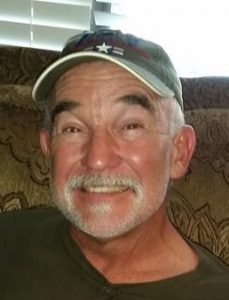
Unfortunately the WRONG Bill Mello – late lamented Councilman from Orange TX.
Bill Mello, a soft-spoken retired engineer, became a reluctant activist over this issue, and he protested repeatedly at regular Huntington Beach City Council sessions calling for an audit.
Mello along with other HB citizens formed the “Citizens Bureau of Investigation,” and he eventually proved his case after much acrimony from the establishment. His efforts caught the interest of reporters, and as the stories of his crusade made the papers, other groups and individuals contacted him with offers of help.
That summer Bill Mello invited other groups to a meeting to discuss common goals and how they could work together to achiee them. The first public meeting was held in September of 1994, and with about 40 in the audience it was clear that there was sufficient interest to formalize the coalition and become more effective.
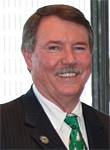
Whitaker – still on Fullerton Council!
Representing organizations at the formative sessions were Carole Walters from the Orange Taxpayers Association, and Bruce Whitaker of the Fullerton Recall movement. Later came the anti-airport group, members of the Libertarian and Reform political parties, and holders of many other diverse viewpoints – all sharing a desire for truly representative elected bodies.
Bill Mello appointed a nine-member steering committee, and the nameless coalition of volunteers decided to hold open monthly meetings at the Orange City Council chambers, and invited speakers to discuss topics of mutual interest. The attendance at the monthly meetings grew, which caught the attention of a writer at the Register who compared the members to a Revolutionary War band of activists known as the “Committees of Correspondence.” This name was not only descriptive, it represented the frustration of individuals with an autocratic and often arrogant Board of Supervisors, and the name was adopted officially.
 In December 1994 the County Investment Pool collapsed and this became the focal point for members, who invited knowledgeable speakers to their monthly meetings in order to determine how such a healthy jurisdiction could have gone belly-up.
In December 1994 the County Investment Pool collapsed and this became the focal point for members, who invited knowledgeable speakers to their monthly meetings in order to determine how such a healthy jurisdiction could have gone belly-up.
Committee members appeared before the board, and were able to get approval for one evening board meeting each month.
The committee was instrumental in getting individual board members to agree not to place any tax measure on the ballot as a way out of bankruptcy. It surprised no one when they reneged and put Measure R on the ballot. This scheme would have added one half cent to the sales tax, and would have raised $3 billion.
The Committees of Correspondence formed a political campaign organization called “No on R,” and were rewarded by seeing Measure R go down to resounding defeat at the polls.
Common Cause, OC Chapter
 The OC chapter of Common Cause was formed in 1990, although individual members of the national and state organizations have been active in OC since the 60’s.
The OC chapter of Common Cause was formed in 1990, although individual members of the national and state organizations have been active in OC since the 60’s.
The goals of Common Cause have been to restore ethcis in government, curb the undue influence of special interest campaign donations, protect the rights of all citizens, and to make elected officials more open and acccountable.

Grindle more recently.
OCCC teamed up with Shirley Grindle to update the countywide TIN CUP ordinance limiting campaign contributions to include various cities. In 1993 the volunteer group worked with Ms. Grindle in drafting the Gift Ban Ordinance, which was adpoted by the Board of Supervisors.
In cooperation with the League of Women Voters and Grindle, Common Cause collaborated in drafting a county code of ethics which was eventually adopted by the board.
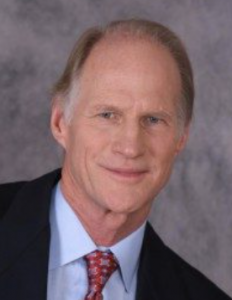
Mitchell
In 1995 OCCC worked diligently to place Proposition 208 on the state ballot, and subsequently campaigned for its passage in 1996. Prop 208 received over 60% of the popular vote and defeated a competing measure; however it is in litigation and some of its most important provisions have been set aside.
Former chairman Bill Mitchell has been an active leader of OCCC, speaking out and writing about current political issues as seen from the perspective of this respected reform group.
Drivers for Highway Safety (DHS)
DHS was formed in response to high-occupancy vehicle lanes, or diamond lanes, which were established by Caltrans on the Costa Mesa freeway in 1985.
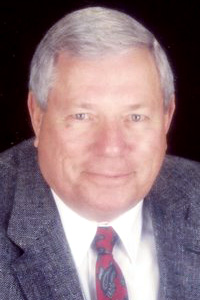
Catron was a race car driver…
Joe Catron, the founder of DHS, drove the route every day and noticed a pronounced increase in accidents. Catron, a former race car driver, suspected the increase was due to the difference in speed between the nearly empty HOV lanes and the slow or stopped adjacent mixed flow lanes.
After several “letters to the editor” were published, he organized public meetings that were well attended. Local reporters picked up his theories and ran articles giving both sides of an issue that, up to that time, had been limited to the biased press releases of Caltrans. OCTC (now OCTA) invited DHS members to their public meetings, supporting the group’s suspicion that the project was based more on politics than on sound engineering.
As community interest increased, by 1986 there were a sufficient number of members to meet regularly to discuss strategy. Since that time, evening meetings have been held regularly twice a month on the second and fourth Mondays, coinciding with OCTA’s morning meetings.
DHS has attracted a membership of community activists who are professionals, many of whom hold engineering degrees. DHS has earned a reputation for presenting its side of a transportation issue with a well prepared and careful analysis of the particular project under discussion. They have won the grudging respect of their bureaucratic opposition who in the beginning was taken by surprise at the technical experise of DHS members.
Another reason for DHS’ success in penetrating the bureaucratic maze surrounding most transportation issues in the county was its ability to see through the variety of techniques employed by OCTA to push through a particular project.
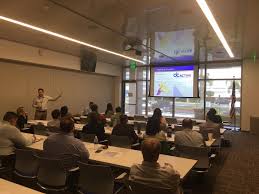
Typical OCTA workshop. DO read this whole section as a primer for how bureaucracies push their propaganda.
Using its substantial PR budget for public outreach, the OCTA would invariably sponsor informational sessions at various locations throughout the county with an invititation list heavily weighted with establishment regulars. These meetings were poorly disguised fronts for OCTA’s real agenda, which in recent years has been the construction of an expensive rail system in the county.
The technique employed at these sessions was for the OCTA staff to make a presentation describing the problem, for example, traffic congestion, and then offer several alternative plans to solve it. Such an approach seemed reasonable at first – however DHS quickly learned that the options offered as solutions were, in fact, projects predetermined by OCTA. Public participation was designed to be a rubber stamp in the guise of consensus. In order to make certain that no serious objections were ever raised at these meetings, the attendees were split off into small discussion groups led by a “facilitator” who guided all concerns back to the preconceived and narrow solutions. DHS became quite skillful at positioning themselves in separate focus groups, and when the perceptive questions from DHS members began to have an effect on the general public in attendance, the promoters were forced to change their tactics.
 Not all of DHS’s efforts have been successful however, and it did lose the battle over the installation of diamond lanes on the 55 Freeway. It had better luck in the case of the Ventura Freeway; working with Assemblyman Tom McClintock of Thousand Oaks, DHS convinved the LA Board of Supervisors to eleiminate HOV lanes on a segment of that freeway in favor of mixed-flow lanes.
Not all of DHS’s efforts have been successful however, and it did lose the battle over the installation of diamond lanes on the 55 Freeway. It had better luck in the case of the Ventura Freeway; working with Assemblyman Tom McClintock of Thousand Oaks, DHS convinved the LA Board of Supervisors to eleiminate HOV lanes on a segment of that freeway in favor of mixed-flow lanes.
Serving on the DHS board of directors are Bill Ward, Wayne King, Chris Ema, Jack Malinckrodt and Les Berriman. Joe Catron retired and moved out of the county.
DHS is one of the volunteer organizations that has played an unheralded but important role in the attempt to make elected officials in Orange County accountable for their actions.
Freeway Fighters
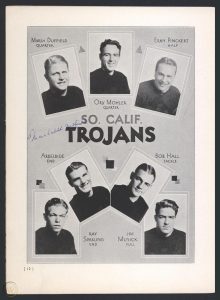
Duffield top left! His son later became a Newport Mayor.
Freeway Fighters was organized in the late 1950s to oppose construction of a coastal freeway through Newport Beach. Marshall Duffield, a former USC footbal star, had moved to Newport Beach in his later years. When he discovered that the proposed freeway located a few yards inland from PCH, sliced Newport in two, he became involved and recruited other beach city residents to the cause.
The proposed freeway would have virtually wiped out all the merchants along PCH, and since it was to be elevated above existing grade, it would also have been a world-class eyesore.
Fortunately Duffield was able to gather enough support, and with the help of then-Assemblyman Robert Badham, the foolish plan was abandoned by the California Department of Transportation.
 During the time that the Newport Beach alignment was under consideration, Caltrans had acquired from the Cagney family (relatives of actor James Cagney) some right-of-way frontage on the north side of PCH, and the proposed use of this parcel below Hoag Hospital caused another controversy.
During the time that the Newport Beach alignment was under consideration, Caltrans had acquired from the Cagney family (relatives of actor James Cagney) some right-of-way frontage on the north side of PCH, and the proposed use of this parcel below Hoag Hospital caused another controversy.
The issue was finally resolved when a compromise was agreed upon, giving Hoag the right to build an outpatient facility and parking lot on the former right-or way. (See “Friends of Cattail Cove” later.)
Gun Owners Action Committee
 In 1989, in response to restrictive legislation regarding the private use of firearms, T. J. Johnson formed the Gun Owners Action Committee in Orange County as a 501-c-4 corporation. In 1992, Ed Worley was hired to expand the committee’s activities by promoting the formation of National Rifle Association (NRA) councils throughout the county.
In 1989, in response to restrictive legislation regarding the private use of firearms, T. J. Johnson formed the Gun Owners Action Committee in Orange County as a 501-c-4 corporation. In 1992, Ed Worley was hired to expand the committee’s activities by promoting the formation of National Rifle Association (NRA) councils throughout the county.
Assistsed by the Institute of Legislative Action (ILA) in Sacramento, the committee works to elect candidates to public office who support the rights of citizens under the 2nd Amendment of the US Constitution.
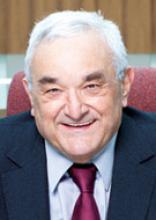
Roberti, defeated over guns.
The ILA sends out questionnaires to individuals running for office, and on the basis of answers received, makes endorsements; individual members often work directly in an endorsed office-seeker’s campaign.
Although not in Orange County, one of the notable successes of this group was the recall of state Senator David Roberti, who represented portions of the San Fernando Valley. While the recall itself did not succeed, Roberti’s anti-gun-owners crusade in Sacramento was fully exposed during the recall, and his constituents threw him out of office when he ran for re-election.
.
Hermandad Mexicana Nacional
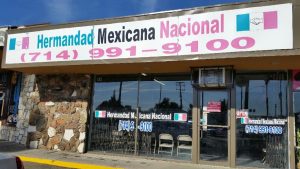 The OC chapter of Hermandad was formed in 1976 and operated until 1979 when it discontinued operation. Later, Hermandad was reorganized as an active chapter by Nativo Lopez.
The OC chapter of Hermandad was formed in 1976 and operated until 1979 when it discontinued operation. Later, Hermandad was reorganized as an active chapter by Nativo Lopez.
The present organization operates four offices, one in Anaheim, another in Garden Grove, and two in Santa Ana. It has a board of directors elected annually, and the funds for its operation come from both private and governmental sources. Under Nativo Lopez’ leadeship, this group has grown to a 1998 dues-paying membership of over 15,000 families. The total membership is estimated to be over 60,000 individuals.
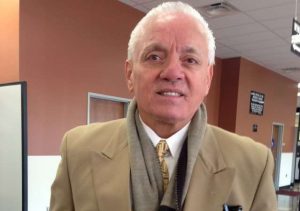
The late Nativo
The goal of Hermandad is the full integration of Spanish-speaking residents into the mainstream of American life. Its activities incliude the education of its members in the political process and voter registration. The OC chapter became embroiled in a controversy regarding registration during the 1996 congressional campaign of Robert Dornan in his general election contest against Loretta Sanchez. This episode is covered more fully in this book under “Election Results by Year, 1996.”
The local chapter of Hermandad is affiliated with the national headquarters, and Lopez is also an official of the national organization.
Jail Alternatives to Musick (JAM)
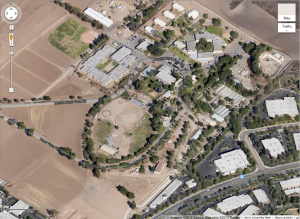 Formed in 1996, this volunteer organization has one overriding issue: to prevent the expansion of Musick Detention Center from a low-security penal facility to an enlarged high-security complex. The founder of this group was Jim Richert of Lake Forest, and after his tenure as chairman Marcel Fernandez took over the reins.
Formed in 1996, this volunteer organization has one overriding issue: to prevent the expansion of Musick Detention Center from a low-security penal facility to an enlarged high-security complex. The founder of this group was Jim Richert of Lake Forest, and after his tenure as chairman Marcel Fernandez took over the reins.
Consisting of over 600 dedicated members, mostly Lake Forest residents, JAM has gone to court to prevent the enlargement of Musick, which was approved by the Board of Supervisors at the behest of then-Sheriff Brad Gates.
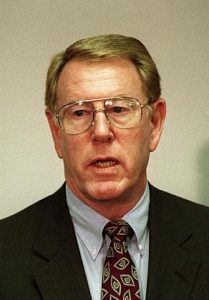
Gates, Sheriff 1975-99
JAM has had some successes in the legal venue, emphasizing on locating and analyzing alternate sites, and is confident of convincing the county that there are better and more taxpayer-friendly locations for an expanded jail.
JAM’s ongoing program is political, consisting of education and advocacy based on facts.
Sheriff Brad Gates remains the most vocal proponent of this quantum leap to a massive high-security prison designed to harbor the most dangerous criminals close to residential areas.
.
John Birch Society
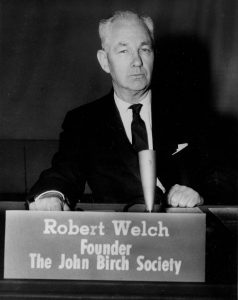 The John Birch Society, a nonpartisan national organization formed by Robert Welch in 1958, attained prominence with its aggressive anticommunist philosophy. Its stated purpose is to “promote less government, more responsibility, and a better world.” It was named after a Baptist missionary and US Air Force officer who was shot by Chinese communists while serving in China as a US intelligence officer.
The John Birch Society, a nonpartisan national organization formed by Robert Welch in 1958, attained prominence with its aggressive anticommunist philosophy. Its stated purpose is to “promote less government, more responsibility, and a better world.” It was named after a Baptist missionary and US Air Force officer who was shot by Chinese communists while serving in China as a US intelligence officer.
Members of the Birch Society became active in partisan politics; however, as the organization had no inclination to form a separate political party, they participated within the existing political structure. These individuals were most often articulate and effective; some became candidates for elected office. The aggressive pursuit of their goals occasionally caused resentment on the part of their opponents, and it was not long before the label of “Bircher” became a pejorative term in the lexicon of liberal pols.
Critics of the Birch Society missed that the society’s motivating focus was largely on foreign affairs, and the drift of various nations toward communism was constantly under review. The society’s magazine, American Opinion, published an annual listing of countries that had come to embrace communism during the previous year.
Although local issues were not a high Birch Society priority, the media portrayed members running for elective office as “extremists,” and often the very fact that a candidate had been accused of belonging to the society became an issue in itself.
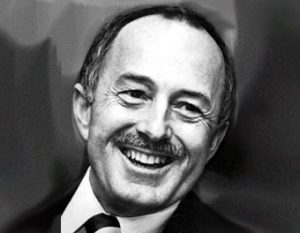
Schmitz
In Orange County, however, the label did not always have a negative connotation, despite attempts by the news media to paint Birchers as “kooks.” John Schmitz was elected to State Senate rather easily, despite attempts by the media to connect him with what they considered to be an extremist organization. He was given the perhaps longest surname in etymological history as he was invariably referred to as “Schmitzmemberofthejorhnbirchsociety.” The widespread perception that Birchers were part of some huge conspiracy, engaged in the destruction of representative democracy, did have an impact over time; but the society received far more attention than its occasional forays into local politics warranted. The Birch Society’s influence in OC came from members participating in the political process rather than acting as missionaries directed by Birch headquarters.
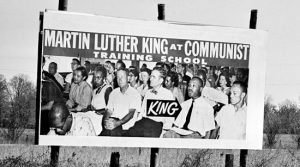
Bircher anti-MLK propaganda
As time went on, the society’s activities and membership waned. Internal bickering at the national level caused some to lose interest. This was the case when two high-profile individuals serving on the society’s board of directors were ousted on the basis that they were anti-Semitic. Slovboda Draskovich and Relivo Oliver had taken an anti-Zionist stand, and the last thing the Birch Society wanted was even the remotest connection to extremist groups.
Later Schmitz, one of the Birch Society’s most ardent and articulate supporters, was also drummed out of its ranks for certain public remarks deemed to be anti-Semitic.
After the collapse of the Soviet Union, anti-communism went out of style, and membership declined further. An anecdote about the Birch Society and politics in California is recounted in the appendix titled “First Person Singular,” in the discussion of Eck Hiestand.
League of Men Voters [not joking]
 In the 70’s, to gain equal time for rebuttal to the issues the League of Women Voters was supporting, several county conservatives came up with the concept of the League of Men Voters. They were mildly successful in obtaining equal media time; however from then to now, no one has been able to determine how many members actually belonged.
In the 70’s, to gain equal time for rebuttal to the issues the League of Women Voters was supporting, several county conservatives came up with the concept of the League of Men Voters. They were mildly successful in obtaining equal media time; however from then to now, no one has been able to determine how many members actually belonged.
Veterans of OC politics believe that Frank White, a trusted employee and friend of Walter Knott, may have had a hand in creating this novel concept on his own.
LULAC (League of United Latin American Citizens)
 LULAC was founded in Texas in 1929, and the first OC council was formed in Santa Ana in 1946. LULAC councils consist of at least 10 persons, and are generally established by city.
LULAC was founded in Texas in 1929, and the first OC council was formed in Santa Ana in 1946. LULAC councils consist of at least 10 persons, and are generally established by city.
The goals of LULAC are to provide members with the know-how and opportunity to participate more fully in community affairs, and to assist others in the same assimilation. In 1996 the Santa Ana Council, with Arte Montez as its president, celebrated its 50th anniversary. [Click here for recent misdeeds of our local chapters – V]
League of Women Voters in OC
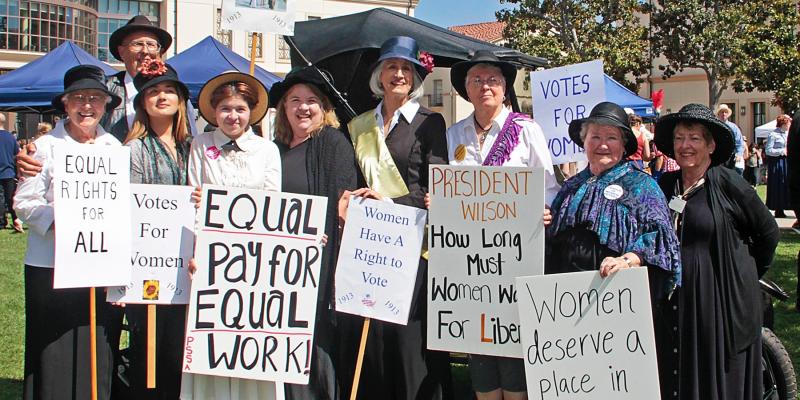
North OC LOWV Suffragette Cosplay.
LWV began in Orange County in 1959 with recognition of the League chapter in Fullerton by the California organization. In 1962 the OC League which included Costa Mesa, Newport Beach and Laguna received official state recognition, and in 1968 the Capistrano Beach chapter was chartered. In addition, there’s a LWV OC which is an inter-league group with its own officers and board comprised of representatives from the other county chapters.
The LWV is a national organization founded in 1920 following ratification by the 66th Congress of the 19th Amendement to the Constitution, guaranteeing women the right to vote. Leaders of the womens’ suffrage movement, especially Carrie Chapman Catt, envisioned the LWV as the next logical step toward full political equality for women.
 All members of local chapters are also members of the national organizations. There are 81 chapters in California. It is a nonpartisan political organization and does not support or oppose any political party or candidate for office. It does encourage its members to participate in government, and influence policy through education and advocacy. The LWV is a tax-exempt 501 (C) (4) organization, but donations and membership fees are not tax-deductible.
All members of local chapters are also members of the national organizations. There are 81 chapters in California. It is a nonpartisan political organization and does not support or oppose any political party or candidate for office. It does encourage its members to participate in government, and influence policy through education and advocacy. The LWV is a tax-exempt 501 (C) (4) organization, but donations and membership fees are not tax-deductible.
The League has been particularly active in OC politics. Some highlights of their activities are:
- 1965 – succeeded in getting Supervisors to establish mental health services under state programs.
- 1968 – succeeded in persuading Supervisors to expand the mental health program to include children.
- 1969 – actively participated in county land-use planning, and members were appointed to Citizens Direction Finding Commission.
- 1970 – supported the formation of the OC Transit District (now OCTA.) Individual league members worked in that campaign which carried by a 57% yes vote.
- 1973 – member Ruth Saadi co-authored the manual “Environmental Planning and Management in Orange County.”
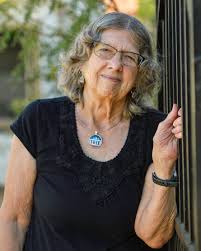 Over the years, League members have worked diligently in the areas of county government, affordable housing, open space, preservation of parks, campaign finance reform, and the appointment of a capable and professional county administrative officer.
Over the years, League members have worked diligently in the areas of county government, affordable housing, open space, preservation of parks, campaign finance reform, and the appointment of a capable and professional county administrative officer.
The League invariably has members auditing board meetings, and more often than not, expressing their points of view on important matters under discussion.
While the League has been active in voter education and registration, it is perhaps best known for sponsoring candidates’ forums, and offering unbiased critiques of certain state ballot measures.
In the late sixties and early seventies the leagues was often thought of as the Democrats’ counterpart to the Federation of Republican Women, but over the years they’ve firmly established a nonpartisan reputation.
Los Amigos de Orange County
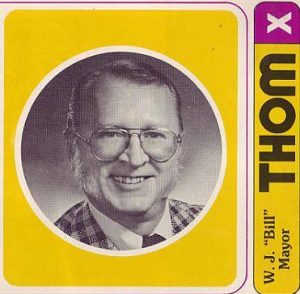 In 1978 Anaheim Mayor Bill Thom, nearing the end of his tenure, took note of the county’s growing Hispanic population. Thom called on some of the Latino community’s leaders to try to set up a liaison group, and to encourage Hispanics to participate more effectively in local government. Following that initial meeting, a number of concerned citizens decided to meet weekly, on an informal baisis, to discuss matters of importance as well as maintain social contacts.
In 1978 Anaheim Mayor Bill Thom, nearing the end of his tenure, took note of the county’s growing Hispanic population. Thom called on some of the Latino community’s leaders to try to set up a liaison group, and to encourage Hispanics to participate more effectively in local government. Following that initial meeting, a number of concerned citizens decided to meet weekly, on an informal baisis, to discuss matters of importance as well as maintain social contacts.
This group, Los Amigos (originaly called “Los Amigos de Bill Thom,” and later “Los Amigos de Anaheim”) has gathered each Wednesday morning at Mimi’s Cafe in Anaheim, more than 500 times. As its activities expanded in the county, its current name was adopted.
 Although the group has no bylaws or elected officers, its format has been successful and effective, and, led by Amin David, it is recognized as becoming more influential as attendance at meetings increases. Truly a unique approach that should be noted by other volunteer groups which spend a great deal of time on bylaws and organizational tables, etc., and then eventually disappear from sight. The longevity of Los Amigos is a tribute to its dedication and interest.
Although the group has no bylaws or elected officers, its format has been successful and effective, and, led by Amin David, it is recognized as becoming more influential as attendance at meetings increases. Truly a unique approach that should be noted by other volunteer groups which spend a great deal of time on bylaws and organizational tables, etc., and then eventually disappear from sight. The longevity of Los Amigos is a tribute to its dedication and interest.
[Vern: THAT’S for sure. I’m going to have to add a lot to that account though. It was actually Amin, Mayor Thom, and a few others who started Los Amigos in reaction to Anaheim Police Brutality, specifically the Little People’s Park riots.  By now you could say we’ve met literally thousands of times – every Wednesday since 1978. For the last 15 years or so we’ve met at the now-endangered East Anaheim German join Jagerhaus; since Covid we’ve met via Zoom – thanks to the tireless Mark Richard Daniels for setting that up! Los Amigos has remained proudly nonpartisan over the decades, although most of our Republicans have started to drift away during the discomfort of the Trump years – we hope that changes! Since the 2016 death of Amin David, the informal leader of this very democratic group has been Councilman Dr. Jose Moreno, and throughout all the years we have striven to live up to our motto, “Nos gusta ayudar” – We love to help.]
By now you could say we’ve met literally thousands of times – every Wednesday since 1978. For the last 15 years or so we’ve met at the now-endangered East Anaheim German join Jagerhaus; since Covid we’ve met via Zoom – thanks to the tireless Mark Richard Daniels for setting that up! Los Amigos has remained proudly nonpartisan over the decades, although most of our Republicans have started to drift away during the discomfort of the Trump years – we hope that changes! Since the 2016 death of Amin David, the informal leader of this very democratic group has been Councilman Dr. Jose Moreno, and throughout all the years we have striven to live up to our motto, “Nos gusta ayudar” – We love to help.]
National Women’s Political Caucus, OC Chapter
 The Women’s Caucus was formed in the early sixties, and is a chapter of the national organization. It’s the largest multi-partisan organization of its kind in the country. Its primary goal is to encourage and support women to run for elective office at all levels of government.
The Women’s Caucus was formed in the early sixties, and is a chapter of the national organization. It’s the largest multi-partisan organization of its kind in the country. Its primary goal is to encourage and support women to run for elective office at all levels of government.
During election cycles the Women’s Caucus circulates a questionnaire to prospective candidates, and based on the responses it receives, endorses those individuals who share its goal of inclusive representation. An individual chapter makes endorsements for candidates running for office within its jurisidiction; candidates for national offie are interviewed and endorsed by Caucus headquarters.
Niguel Homeowners Association
 One early neighborhood group, active at the Board of Supervisors meetings long before Laguna Niguel was incorporated, was Niguel Homeowners Association. Founder Paul Cramer was a retired architect who could not be fooled by any of the deceptions being used to promote huge developments.
One early neighborhood group, active at the Board of Supervisors meetings long before Laguna Niguel was incorporated, was Niguel Homeowners Association. Founder Paul Cramer was a retired architect who could not be fooled by any of the deceptions being used to promote huge developments.
Cramer and other members of the association were professional people, who often were far more skilled in facets of tract building than were the county staff people sent out to give the troops a snow job.
These citizens were always polite and reasoned in their presentations, but no amount of factual input would sway the supervisors from doing as the developers told them to do.

The reprehensible Riley strikes again.
An example of the frustration experienced by the Niguel residents was when, after being presented with overwhelming and persuasive objections to an indefensible tract proposal, Supervisor Tom “General” Riley responded by saying that he could not turn down the project: “I gave my word to my friends that I would support it,” he said as he approved the venture.
His friends in this case consisted of the board of directors of Phillip Morris Tobacco Company (doing business as Mission Viejo Company.)
After the 1989 incorporation of Laguna Niguel, the Niguel Homeowners reduced their activities and evetnaully, when Paul Cramer passed away, the group became inactive.
Orange County Automobile Dealers Association
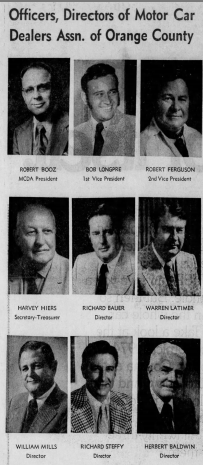 In 1938, a small group of car dealers from Santa Ana, Newport Beach and Costa Mesa formed an organization called the Motor Car Dealers Association of Orange County. Their main purpose was to present a united front and assist dealers in labor relations.
In 1938, a small group of car dealers from Santa Ana, Newport Beach and Costa Mesa formed an organization called the Motor Car Dealers Association of Orange County. Their main purpose was to present a united front and assist dealers in labor relations.
World War II interrupted the manufacture of new cars, but in the early 50s the Association became active again and had a part-time manager, Dick Heffern, an attorney from Anaheim. Presidents included Ted Robbins, Harvey Hiers, Tom McLean, Rex Reason, and Phil Renick.
The first auto show was held in the parking lot of the Balboa Bay Club to introduce the 1952 models. An ad for the 1956 show listed 23 dealers.
In the late 50s and early 60s, the purpose of the association was expanded to include group health and insurance plan offerings.
In 1961 Steve Royall was president of the group and hired Harvey Hiers as full-time association manager, and the first office was a bedroom at Hier’s Santa Ana residence. The association incorporated and later opened an office on Bush Street in Santa Ana. In 1992 the organization’s name was changed to the OC Autombobile Dealers Association.
What’s the purpose of listing this group (and the OCBC, coming next) in a book about OC politics? The answer is that both organizations have had a little-known but immense influence on the political history of the county.
Just as the Chamber of Commerce and Industrial League have been vigorous, albeit puzzling, advocates of every sales tax increase put to OC voters, the members of the Car Dealers Association have been steafast opponents, and as a result, have saved county taxpayers billions of dollars.
The association was instrumental in the defeat of Proposition A, with a price tag of $5 billion, and of Measure R’s sticker price of $3 billion! Fortunately for all businesses in OC as well as consumers, both measures went down to crushing defeat, thanks in no small part to the members of the Car Dealers Association.
Two executive directors of the Car Dealers Association, Jim Upp in 1986 and Kevin Allen in 1996, deserve kudos for coordinating contacts between the individual car dealers and the campaign committees that opposed the tax levies.
OCBC (OC Business Council)
[Another timely story of those who still rule this county.]

Formed April 28, 1995, the OCBC resulted from the formal consolidation of what had been two separate entities: the OC Chamber of Commerce and Industry, and the Industrial League of OC. The executive directors of the two organizations were Ken Moore and Todd Nicholson, respectively.
The newly formed council claims to provide two major benefits for the greater good of the region: “1) a one-stop office for marketing Orange County as a whole, and 2) a single and effective ‘voice’ for business.”
Several months after the merger a third OC business development group, Partnership 2010 [see below], joined the OCBC and provided additional strategic planning skills and regional contacts to the united effort.
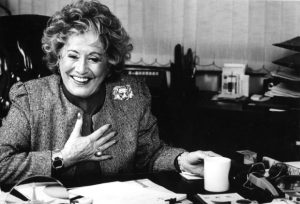
Her again!
Partnership 2010 was a coalition of business, government, and education leaders who worked to develop and implement a strategic plan for OC’s economic growth. The concept originated in 1991 in a core-planning group brought together by Supervisor Harriet Wieder.
In April 1992, after a period of research of the many components of their vision, standing committees and an executive committee were formed. In July of that same year, a board of directors and a president were named to formally organize P2010 into a legal entity. Specific areas of concern were taxes, environmental quality, transportation, work force, and education.
Prior to merging with the OCBC, P2010 defined itself as noncompetitive with other similar organizations, and in fact included executive directors of the Industrial League, the Chamber of Commerce and the Building Industry Association as members of its own board. The president and CEO of P2010 was Tim Cooley who, after the merger, became part of OCBC’s management.
Some of the more prominent citizens who served on the advisory board of P2010 were George Argyros, Dr. James Doti of Chapman College, Gary Hunt and Thomas Nielsen of the Irvine Company, Henry Segerstrom, Thomas Sutton, Kathryn Thompson, Supervisor Harriet Wieder, and Judith Sweeney, the president of the LA Times OC Edition.
P2010’s board of directors included: Monica Florian, Irvine Co. executive director; Todd Nicholson of the Industrial League; Bill Hodge, executive director of the League of Cities; former Irvine mayor Sally Sheridan; Reed Royalty of the OC Taxpayers Association; OC Supervisors Thomas Riley and Gaddi Vasquez; Ken Moore of the OC Chamber of Commerce; Donald Murray of Deloitte & Touche; and Julie Newcomb, president of Costain Homes. (These are partial lists.)
In 1997 Stan Oftelie moved over from the top job at OCTA, and became the executive director of OCBC. Todd Nicholson went to work in the private sector.
In addition to OCBC’s stated goals, there are many in the county who belive an important project of the council is to expedite the construction of an immense international airport on the Marine Corps base at El Toro.
The conversion of El Toro is a highly .controversial proposal that was opposed by many residents of the county, particularly those living in areas neighboring the base. It’s questionable if the OCBC’s stand in favor of El Toro’s conversion is supported by a majority of its membership, as many of them live in the communities that would be most affected by the activities of a major airport.
 Another anomaly in this organization is that despite the assumption that its members could be expected to be fiscal conservatives and therefore opposed to tax increases, both the Chamber and the League have invariably supported whopping county sales tax increases every time the matter has been put to the voters!
Another anomaly in this organization is that despite the assumption that its members could be expected to be fiscal conservatives and therefore opposed to tax increases, both the Chamber and the League have invariably supported whopping county sales tax increases every time the matter has been put to the voters!
An explanation for the contradictory policies of the OCBC appears quite obvious. Even a cursory glance at the roster of directors will confirm the direct connection of the business group to the same special interests who have controlled county government for years. [See “Heavy Hitters.”]
Many serving on the boards and executive committees of the OCBC are the same people and corporations that have financed candidates for the Board of Supervisors and City Councils over the years. While they had significant influence acting individually, their clout was increased to an exponential degree with control of the OCBC.
Even more ominous is the fact that management from the County’s two major daily newspapers [sigh, and now we’re down to one – V] are on the board of directors, which raises the possibility of conflict of interest should certain controversial projects be supported by the OCBC.
A partial list of the OCBC board of directors (after merger with P2010) includes the following executive committee officers:
- Chairman John R. Scholar, CEO, OC Register
- Chariman-elect Gary Hunt, executive VP, Irvine Company
- Paul Pressler, president, Disneyland Resort
- Jo Ellen Allen, director of public affairs, SC Edison
- Robert Hovee, president, RAH Consulting Group
- Robert B. Grant, managing partner, Deloitte & Touche LLP
- George Argyros (whom we have met repeatedly)
- Robert Bein, William Frost & Associates
- Peter Case, senior district VP, Merrill Lynch
- John Franklin, senior VP, Mission Viejo Company
- Paul Freeman, director of couumnity affairs, CJ Segerstrom & Sons
- Mark Leslie, assistant VP, Pacific Bell
- Thomas Nielsen, former VP, Irvine Company
- Rita Pirkl, executive VP, Silicon Valley Bank
- Richard Reisman, CEO, OC Business Journal
- Thomas Sutton, CEO, Pacific Life
- Tom Wilck, former executive of the Irvine Company & executive VP & director, Nelson Communications Group
- Wayne Wedin, Wedin Enterprises
- and Maria Chavez Wilcoz, president, United Way of OC.
Apparently it wasn’t enough for the establishment to remain a silent partner, since what had formerly been an open secret was confirmed at a rare public hearing, called with little notice on June 20, 1996. At that special meeting, the OC Business Council WAS NAMED AN OFFICIAL COMPONENT OF COUNTY GOVERNMENT.

CEO Jan Mittermeier submitted a document for approval entitled “Restructuring Plan for Orange County.” On page 8 was a notation that “the Business Council is eager to assist us and looks forward to working with the county on important issues over the years.”
NO WONDER the OCBC was “eager” to work openly with the Supervisors – NO MORE BACKROOMS OR PRIVATE DEALS NECESSARY! With Supervisor Bergeson dissenting, the Board of Supervisors voted to grant the OCBC permanent status as an unelected part of County government!
Later the OCBC would receive huge contracts from the county for projects relating to business improvement and tourism.
The OCBC is the vehicle by which major developers not only participate in, but control county government. And the enabling package was put together by the Diamond Group, whose activitiest are described in more detail in the section “Consultants and Lobbyists.”
[For a more comprehensive understanding of the OCBC and its merger partners, refer to Directors Wayne Wedin and Sally Sheridan whose activities are described in “Political Convictions.” Also Tom Wilck in “Consultants,” and Segerstrom, Irvine Co, Mission Viejo Co, Disney et al in “Heavy Hitters.”]

OC Council for an Environment of Excellence, Full Employment and a Strong Economy Through Planned Development (CEEED)
 CEEED was formed in the early 70s as a corporate counterbalance to the popular attempt to control growth in OC by ordinance. Its membership consisted of major corporations and unions who banded together in this effort.
CEEED was formed in the early 70s as a corporate counterbalance to the popular attempt to control growth in OC by ordinance. Its membership consisted of major corporations and unions who banded together in this effort.
The first executive director was Gil Ferguson. Gil represented CEEED at various public hearings in mostly successful attempts to preven the adoption of environmental standards or other restrictions in deliberations concerning the rapid county growth rate..
OC Farm Bureau
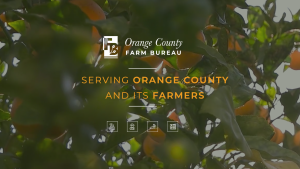 The OC Farm Bureau is a participating member of the California Farm Bureau Federation, which was established in 1917, during World War I, to coordinate state agricultural resources with the war effort. Each county in the state has, or is associated with, a local organization. The bureau provides its members with such benefits as farm insurance and cooperative buying advantages. When citrus production was a mainstay of OC’s business activities, the Farm Bureau and its members played a role in local politics. The bureau has an elected board of directors and a president. The last official of the OC Farm Bureau to run for county office was Gordon Bishop who had been president of the group immediately prior to running for supervisor.
The OC Farm Bureau is a participating member of the California Farm Bureau Federation, which was established in 1917, during World War I, to coordinate state agricultural resources with the war effort. Each county in the state has, or is associated with, a local organization. The bureau provides its members with such benefits as farm insurance and cooperative buying advantages. When citrus production was a mainstay of OC’s business activities, the Farm Bureau and its members played a role in local politics. The bureau has an elected board of directors and a president. The last official of the OC Farm Bureau to run for county office was Gordon Bishop who had been president of the group immediately prior to running for supervisor.
With much of the tillable county acreage converted into home sites and other commercial uses, the bureau became less a factor in county politis although it continues to maintain a full-time office and staff.
OC TAX (OC Taxpayers Association)
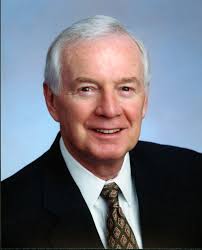
Royalty
OC TAX was founded in 1986 by Robert Botts, James Erickson, Dana Reed, John C. Flanigan, and Robert S. Haskell. This group claims to be “the only county-wide organization whose exclusive focus is to represent taxpayers on governmental tax and spending issues,” and in a statement of principles, lists 12 different ways in which taxes are “good.”
OC Tax is funded by members’ dues and contributions and a salaried executive, Reed Royalty, serves as president. [The aging Reed was replaced a few years ago by Carolyn Cavecche – V] It is commonly believed that major corporations in this county are the chief contributors to as well as beneficiaries of this organization’s activities.
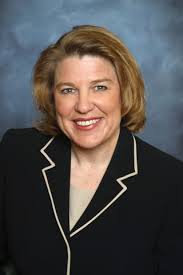
Carolyn Cavecche is the current head of OC TAX, and we weren’t imagining it – everything they champion – Poseidon, toll lanes, hotel subsidies, the Angels giveaway… is BAD FOR TAXPAYERS!
OC Tax has supported every local tax increase put before OC voters, and President Reed Royalty has signed several of the ballot arguments in favor of the tax increase propositions, and has also been active as a proponent for these ballot measures at various public forums.
At one time OC TAX threatened to sue Orange Taxpayers Association [below] for infringement of name, but the latter group took the position that they had been in existence longer than OC TAX and that beyond that OC TAX was a “front group” with a misleading name, actually in favor of new taxes more often than not. Nothing came of this dispute, it never went to court, and both organizations continue to exist, on opposing sides.
Orange Taxpayers Association
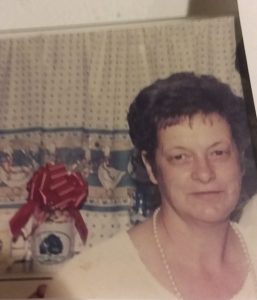
The firebrand Carole Walters
Founded in 1986 by community activists Corky Chambers, Alice Clark and Corinne Schreck, this group of concerned citizens banded together to protect their property rights in the city of Orange. Their activities expanded into opposing “sweetheart” taxes and in 1992 Carole Walters became president. Walters’ tenacious defense of local control and insistence on accountability by elected officials spilled over into county matters, particularly those that affected all local communities.
The Taxpayer’s Association, with Walters as its most vocal representative, became an important player in trying to inject some common sense and put the brakes on the county’s drift into financial trouble and eventual bankruptcy.
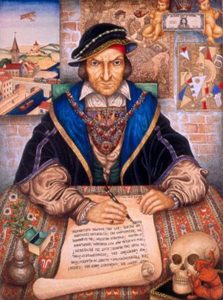 Overgrowth
Overgrowth
Overgrowth is a volunteer organization concerned with county issues having to do with growth and development. The group was formed in the mid-80s by Phillip Weinberg, and its activities consist mainly of writing incisive letters to the editor of local newspapers, and appearing before regulatory bodies. The organization has relatively few members; however they have had an impact on several local deliberations.
Pro-Choice of Orange County
 In the 80s a group of OC women formed an organization for the sole purpose of protecting a woman’s right to choose in all matters concerning her health and body.
In the 80s a group of OC women formed an organization for the sole purpose of protecting a woman’s right to choose in all matters concerning her health and body.
To achieve that goal, this organization has become involved in the political process to a considerable degree. It sends out questionnaires to potential candidates, and supports those who respond in accordance with its pro-choice philosophy.
The group is nonpartisan, and assists endorsed candidates with funds, precinct and other volunteer help. There are approximately 15 women who serve as advisers, and it has a large following and mailing list.
Pro-Life of Orange County
 The Pro-Life group has been active in OC for a number of years. It circulates questionnaires to potential candidates for partisan and nonpartisan elective office, and either supports or opposes office seekers depending on their position on the abortion issue.
The Pro-Life group has been active in OC for a number of years. It circulates questionnaires to potential candidates for partisan and nonpartisan elective office, and either supports or opposes office seekers depending on their position on the abortion issue.
Pro-Life has a PAC, and helps candidates it endorses by mailing out voters’ guides and providing volunteers.
Pro-Life is one of the volunteer organizations that refused to supply any historical background for inclusion in this book on the basis that it “receives requests from all sorts of organizations trying to obtain information.” Presumably such request are from groups which, in Pro-Life’s view, would use the data to discredit their efforts?
Project 99
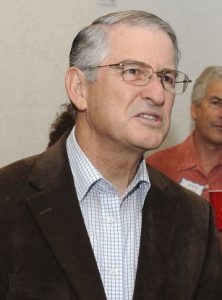
The never-disappearing Agran, who just got re-elected onto Irvine Council this month.
Project 99 was founded in 1996 in response to the attempts to build a major air terminal on the grounds of the El Toro Marine Base. After two measures dealing with the construction of this unwanted facility had been passed with the help of huge campaign donations by a small group of businessmen, a group of citizens decided that a nonpolitical approach might be more effective.
Accordingly, Project 99 was created as a nonprofit corporation dedicated to finding alternate uses for the El Toro base that would be of more benefit to the county, and less intrusive on the quality of life in impacted areas. Larry Agran serves as volunteer chairman of the group, and it has been successful in involving residents in its research and education goals, relying on the financial support of numerous individual donors.
San Clemente Taxpayers Association
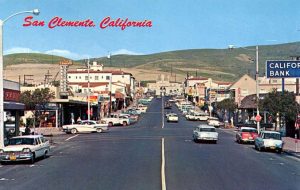 Founded in the mid-70’s by Norman “Norm” Ream, a former undersecretary of defense in the Johnson Administration, it was one of the early antigrowth organizations in the county, and under Ream’s leadership it helped to delay the pace of growth in San Clemente.
Founded in the mid-70’s by Norman “Norm” Ream, a former undersecretary of defense in the Johnson Administration, it was one of the early antigrowth organizations in the county, and under Ream’s leadership it helped to delay the pace of growth in San Clemente.
San Clementeans for Managed Growth
Fromed in 1988, about the same time that the Sensible Growth Initiative was being written, residents of San Clemente joined with the county group to prepare a similar initiative applicable to the City of San Clemente. That seaside community was being engulfed by new development and a Chamber of Commerce majority on the City Council did nothing to protect their constituents from the adverse effects of high density and overbuilding.
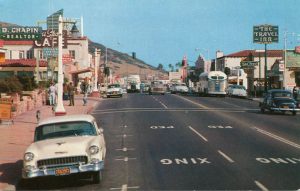 The citizens’ effort was spearheaded by Tom Lorch, the one member of the Council sympathetic to the residents’ concerns. He had been elected on the promise to protect the residents from the traffic, pollution and deterioration of quality of life that comes with rubber-stamping developers’ projects without restriction.
The citizens’ effort was spearheaded by Tom Lorch, the one member of the Council sympathetic to the residents’ concerns. He had been elected on the promise to protect the residents from the traffic, pollution and deterioration of quality of life that comes with rubber-stamping developers’ projects without restriction.
Tom Lorch and his wife Teddi were tireless workers on behalf of the initiative and it was approved by a large margin. However, the majority chose to ignore the election results, and, aided by a lawsuit led by the BIA, never enforced the ordinance.
Save Our San Juan (SOS)
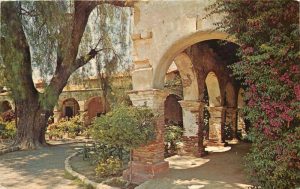 SOS was formed in late 1990 and incorporated as of April 1991. Its purpose is to promote, protect, preserve, and enhance the community of San Juan Capistrano and the County of Orange. SOS is a tax-exempt corporation recognized by the California and federal governments.
SOS was formed in late 1990 and incorporated as of April 1991. Its purpose is to promote, protect, preserve, and enhance the community of San Juan Capistrano and the County of Orange. SOS is a tax-exempt corporation recognized by the California and federal governments.
Bob King, a resident of San Juan Capistrano, founded the group and has served as a very active leader of the organization. He has been instrumental in informing the community about the proposed San Joaquin Hills toll road, and keeping it involved in the struggle to keep the super-scale highway from destroying the neighborhoods thorugh which it was to be built.
SOS was the newest and smallest of the environmental interest groups fighting the toll road, and was involved in state and federal litigation as plaintiffs in lawsuits against the various governmental agencies involved in the planning and construction of the corridor.
In addition SOS was quite active in influencing the various rating services when it came time for them to assign a risk designation for bonds being sold to the public by the Corridor Agency. SOS insisted that potential investors be warned regarding the fina ncial risk inherent in this road for pay proposal.
ncial risk inherent in this road for pay proposal.
SOS filed a lawsuit against the agency, challenging an element of their circulation plan. During the trial SOS was able to prove that the agency had disseminated information at public hearings that they knew to be untrue. Videotapes and transcripts of these meetings were used to prove the point beyond any doubt, and SOS was awarded $30,000 in legal fees as part of the judgment in their favor.
As in so many other cases where citizens groups have sued the county or its agencies to protect their neighborhoods, the agency was finally able to prevail, using taxpayer funds.
SOS remains active in local and county issues that impact homeowners and residents in the community.
Taxpayers for Responsible Planning (TRP)
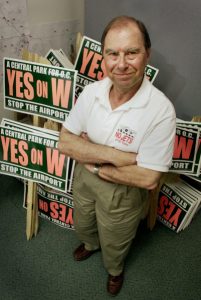
Kogerman
TRP was formed in response to efforts by George Argyros (discussed many times above) to build a massive international airport at the soon-to-be-closed El Toro Marine Base. Argyros spent a large amount of his own money hiring professional circulators to obtain a sufficient number of signatures to put the grandiose project on the ballot.
Numerous residents of communities that would be most adversely affected by such a facility were understandably alarmed at the prospect of such an outsize nuisance in south OC. Informal discussions were held by airport opponents in an attempt to devise a plan to stop the assault on their peaceful enjoyment of serene neighborhoods.
Taxpayers for Responsible Planning was formed as an official PAC and developed into an enthusiastic volunteer group of dedicated airport opponents under the leadership of Bill Kogerman who was assisted by board members Bert Hack and Charles McLaughlin. Norm Grossman, an experienced veteran from the Proposition A and Sensible Growth campaigns, was hired by TRP as coordinator on a full-time basis, and to oversee the political campaign that was to follow. TRP developed into one of the most effecteive and motivated volunteer organizations ever to exist in OC.
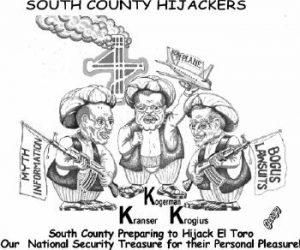
Pro-airport propaganda cartoon lampooning Kogerman, Kranser, and Krogius.
TRP mounted a multi-pronged attack on Argyros’ scheme, lobbied in Washington DC, filed a lawsuit against Orange County, and was able to delay “interim” commercial cargo flights in and out of El Toro. In addition to waging a direct political campaign against Measure A, the citizen’s organization also concentrated on developing and supporting neighborhood-friendly land use and planning policies.
TRP expanded an Advisory Board to 31 members and provided the framework for a highly successful fundraising effort at the grassroots level, unequalled in OC politicis up to that time.
TRP was also the mother organization for other anti-Airport groups that would follow such as the previously-discussed Clean the Air / NO JETS, El Toro Coalition, OC Business Coalition, and Clergy for Wholesome Communities. For more details on the Airport political campaigns, please see “Benchmark Ballot Propositions.”
Telephone Taxpayers

COULD be Jim Townsend, that elusive, phone-utilizing foe of OC taxes!
Telephone Taxpayers is an all-volunteer organization founded by Jim Townsend, an articulate voice on any issue involving a tax increase. Mr Townsend, a tireless and effective opponent of taxation, has played a key role in opposing various tax measures put before the voters of Orange County.
Telephone Taxpayers has also been helpful to candidates who share the same aversion to unnecessary taxation as its founder. Telephone Taxpayers is nonpartisan, and endorses selected candidates and works actively for their election.
Traditional Values Coalition
 The TVC was started by Reverend Lou Sheldon, and is headquartered in Orange County. While unresponsive to requests for information, it is known to be politically active at both state and local levels. The coalition prints a voters’ guide, distributed by certain cooperating Protestant churches in OC, as well as by mail.
The TVC was started by Reverend Lou Sheldon, and is headquartered in Orange County. While unresponsive to requests for information, it is known to be politically active at both state and local levels. The coalition prints a voters’ guide, distributed by certain cooperating Protestant churches in OC, as well as by mail.
TVC rates candidates according to their stand on those specific issues having “moral” implications. Two issues important to them are abortion and homosexual marriage.
 Reverend Sheldon has been an outspoken and articulate opponent of abortion-on-demand and same-sex marriage. His public appearances are invariably low-keyed, and his arguments are expressed with conviction and humility.
Reverend Sheldon has been an outspoken and articulate opponent of abortion-on-demand and same-sex marriage. His public appearances are invariably low-keyed, and his arguments are expressed with conviction and humility.
TVC maintains offices and full-time staff, with Beverly Sheldon apparently in charge of the day-to-day operation of the coalition.
Vietnamese Community of OC Inc.
 Leaders in the Vietnamese community met in 1977 as an informal group to find ways to meet the needs of a rapidly growing population of Vietnamese and other Asian immigrants and refugees.
Leaders in the Vietnamese community met in 1977 as an informal group to find ways to meet the needs of a rapidly growing population of Vietnamese and other Asian immigrants and refugees.
In 1978 these community activists, under the leadership of Mai Cong, formed a nonprofit corporation, known as the Vietnamese Community of Orange County Inc.
The broad goals of this organization are to respond helpfully to the problems of all immigrants, to counsel them, assist in the transition from homeland to Orange County, and ultimately encourage them to participate actively in community affairs.
The organization maintains a fully staffed office in Santa Ana and is well thought of – not only in OC, but also throughout the state and nation.
Voters Information Bureau (VIB)
 The VIB was founded in the 60s by Charlie Brown, a conservative activist from Costa Mesa, who later became an administrative assistant to Senator John Schmitz. The organization was created to monitor the changes made in the method of vote counting in OC. In 1964 the Registrar of Voters, Bill St John, changed from hand counting the ballots to machine counts. This change caused a considerable amount of controversy, and many citizens were concerned – even alarmed – by the prospect of a Chicago-type election process where voters push the lever once to support the entire party ticket.
The VIB was founded in the 60s by Charlie Brown, a conservative activist from Costa Mesa, who later became an administrative assistant to Senator John Schmitz. The organization was created to monitor the changes made in the method of vote counting in OC. In 1964 the Registrar of Voters, Bill St John, changed from hand counting the ballots to machine counts. This change caused a considerable amount of controversy, and many citizens were concerned – even alarmed – by the prospect of a Chicago-type election process where voters push the lever once to support the entire party ticket.
After many public and private hearings, the Board of Supervisors chose the Coleman voting machines over other bidders. The loosely knit group, which had a keen interest in the integrity of the vote counting procedure, formed VIB as a watchdog organization to audit the changeover from hand to machine vote tallying.
 Suring the first election in which machines were used, CIB set up a large tent in a vacant lot on Chestnut Street across the street from the registrar’s facilities in order to have a place to gather as the results came in during the night. It was in no way a demonstration.
Suring the first election in which machines were used, CIB set up a large tent in a vacant lot on Chestnut Street across the street from the registrar’s facilities in order to have a place to gather as the results came in during the night. It was in no way a demonstration.
Someon called out the fire department. The responding firemen tried to disband the VIB gathering in the tent, under the pretext that the tent was not large enough to hold the number of people inside, even though the flaps were up and it was impossible to tell how many people were actually in the tent.

Belligerent fireman. For illustration purpose only.
The firemen became belligerent, and VIB adamantly refused to vacate the area. This was about as close to civil disorder in OC that long-time observers could remember. The firemen were outnumbered, and after a tense face-to-face confrontation, they returned to the firehouse. VIB went about their business without further distraction, and eventually accepted the vote-tallying machines as a fact of life.
VIB later became involved in several local races, dispensign information to the voting public by way of listing all candidates’ answers to a series of questions relating to current issues. This information was mailed without comment or endorsement of any kind, and VIB received plaudits for this public service by both the candidates and recipients.
VIB does not support the election or defeat of any candidate, and as funds are available it dispenses the unedited text of all candidates’ responses to VIB’s request for their views on current issues.
*********************
Previous installments
1. Introduction, Readers’ Guide, Bio of Tom.
2. OC Becomes a Conservative Powerhouse, 1920-80
3. Partisan Political Volunteers in the OC, 1960-2000
NEXT IN THE SERIES:
- Governmental and Quasi-Governmental County Organizations
- Environmental Volunteer Groups
- Heavy Hitters! and more…







Los Amigos was founded in 1978.
That sounds right. Rogers’ self-published book has a few typos, and he must have typed 78 as 87. I’ll fix it.
More readers should check this story out, and at least skim through it. To me one of the most important sections was on the birth of the Orange County Business Council (OCBC.)
We see them butting in their nose everywhere in the county where large financial interests are conspiring to rip off the people, and trying to tell us it’s “good for business.” Tom’s account here tells of their formation in 1995 by the very biggest economic actors in the county – the Irvine Co, Disney, Deloitte & Touche, SC Edison, the Mission Viejo Co – not exactly fighters for OC’s small businesses. And it also shows how they immediately developed a symbiotic relationship with the Board of Supervisors which continues to this day as they act as an unelected branch of OC government. As Rogers wrote in 2000, “The OCBC is the vehicle by which major developers not only participate in, but control county government.”
And every time the OCBC comes out in support of a big ripoff telling us it’s “good for business” – Poseidon desal, toll road extensions, toll lanes on our freeways, luxury hotel subsidies, the Angel Stadium giveaway – the OC Taxpayers Association (OC TAX) will be there right beside them, telling us it’s also “good for taxpayers.” As ridiculous and Orwellian as that claim may be.
This chapter of Tom Rogers also tells of the birth of OC TAX in 1986, and how they never WERE defenders of the average taxpayer. Tom Rogers and friends had their number from the start, as he wrote in 2000 that “OC Tax has supported every local tax increase put before OC voters, and President Reed Royalty has signed several of the ballot arguments in favor of the tax increase propositions, and has also been active as a proponent for these ballot measures at various public forums.”
This also tells the story of how OC TAX tried unsuccessfully to sue Carole Walters‘ honest Orange Taxpayers Association over their name. But not only was the latter group older, they also literally did what they claimed to do – fought for the average taxpayer. I recently tracked down Carole Walters who is still alive in Orange, and will be interviewing her about all these hijinks.
Two other sections of this are great because the stories they tell are so similar to things I’ve seen in this county in more recent years (and probably in all corrupt places.)
The section on “Citizens for Sensible Growth and Traffic Control” shows a classic example of how, when a reform movement looks like it may be effective, the special interests will sit down with you, try to work out a compromise, promise to save you lots of trouble, gradually water down and whittle away at what you’re trying to do… until, if you’re smart and principled, you cut your ties and stop wasting your time with them.
And the section on “Drivers for Highway Safety” shows how a large self-interested agency, in this case the OCTA, will “manufacture consent” in the public (to use Noam Chomsky’s phrase) with cleverly manipulated and orchestrated “outreach” and “workshops.” How often do we see this, if we’re looking? A lot!
I remember OCBC’s Lucy Dunn insisting that the public would just LOVE toll lanes on the 405 freeway, if they were just “EDUCATED” about it!
I’ve fallen behind on all things OCTA. Are the toll lanes — or, as the late Gus Ayer dubbed them, “Lexus Lanes” — still a live option? I know that some version of a streetcar is coming, but I don’t know how bad, among their various proposals for one, it is.
The toll lanes are happening, we lost that war. Caltrans took the dirty business over from OCTA. It takes a few years but they’ve been knocking down and rebuilding those 13 bridges on the 405.
I’ve been trying to see how many of the OC OG’s described in these stories are still alive, and/or get pictures of them. And I’ve managed to track down Carole Walters of the Orange Taxpayers Association (NEVER to be confused with the corrupt Orange COUNTY Taxpayers Association.) She just sent me her picture… I THINK it’s from the 90s…
She has some plans of starting ANOTHER Taxpayers Association. But most fun was when I got her reminiscing about her old friends Steve White and Denis Fitzgerald whom she hadn’t seen in many years. She told a lot of good stories about how they, along with Tom Rogers, Bruce Whitaker, and a few others, fought the power in this County during the 90’s bankruptcy, and fought it successfully.
That’ll have to be its own story.